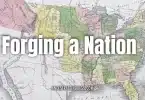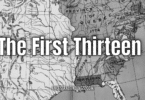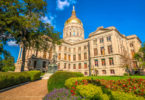The capital of Nevada is the Consolidated Municipality of Carson City, also known simply a Carson City. It is an independent city and is named after a mountain man from the 1800s named Kit Carson. It has a population of about 55,000 and is the sixth most populous city in Nevada. Most of the people in Carson City live in the Eagle Valley portion of the city, on the east edge of the Carson Range. This range is a branch of the Sierra Nevada mountains, which are around thirty miles south of the city of Reno.
The city started as a mere stopover place for people who were emigrating to California. It transformed from a camp to a genuine city when the Comstock Lode—a huge silver vein in the northeastern mountains of the area—was discovered. Carson City was declared the capital of Nevada in 1864. During most of its early history, it was a hub for the Virginia and Truckee Railroad. The tracks for this railroad were finally removed in 1950.
Carson City used to be the county seat of Ormsby County, but the county was abolished in 1969. The territory of the county merged with Carson City. After the consolidation, the city limits of Carson City were extended considerably, west across the Sierra Nevada mountains, and up to the state line of California at the middle point of Lake Tahoe. The city is treated as the equivalent of a county for US Federal Census purposes, as are other independent (i.e. without a county) cities in the United States.
Before Europeans came to the area that is now Carson City, the Washoe Native American tribe lived there. It was their home before contact with those of European descent. The first person of European descent to come to the area that is now Carson City was John C. Fremont, who came with an exploration party of which he was the leader. This visit was made in January of 1843. John named the river that flowed through the area the Carson River, in honor of Kit Carson, who was a mountain man who John hired as a scout for his expedition. Other settlers who came later named the area Washoe, after the Native tribe who lived there.
In 1851, the Eagle Station ranch was built along the Carson River and acted as a trading post and a place to stop and rest for immigrants and explorers on the Carson Branch of the California Trail. This trail went through the Eagle Valley. Both the valley and the ranch were named after a bald eagle that was discovered and killed by one of the area’s first settlers. The actual eagle was stuffed and mounted on a wall inside the trading post.
At the time the area was settled, it was part of the Utah Territory, and was governed by the territorial legislature in Salt Lake City. The early settlers of Carson City did not like being governed by a Mormon government, and they wanted a new Nevada Territory to be created for them. In their quest, a vigilante group of early settlers who were particularly influential in the area set out to look for a site for a territorial capital. This group was led by Abraham Curry.
Abraham purchased Eagle Station Ranch in 1858, and the ranch and the settlement around it was renamed Carson City. When Abraham had the ranch surveyed, he decided it would one day be the location of the capital city of the Nevada Territory. To that aim, he left a ten acre plot empty in the middle of the new town for a capitol building to one day be placed there.
After the discovery of silver at the Comstocke Lode in 1859, the population of Carson City really boomed. Abraham built a hotel called the Warm Springs Hotel a mile east of the city for travelers and potential residents checking out the town. The territorial governor, James Nye, came to Nevada and selected Carson City to be its capital. A lawyer named William Stewart who accompanied him on this trip influenced his decision. Other towns in Nevada like Virginia City and American Flat were in consideration to be the capital, and Carson City won the honor with ease.
Abraham Curry loaned his hotel to the territorial legislature to use as a meeting hall. At their first meeting there, the legislature named Carson City as the county seat of the newly created Ormsby County. They also decided to use the hotel as the territorial prison, and gave Abraham the job as its first warden. The property on which the hotel stood is still part of the Nevada state prison today.
Nevada became a state in 1864. This was during the Civil War, and Carson City was confirmed as the permanent state capital at the time Nevada achieved statehood. After the Civil War, the silver rush in Nevada eased off and Carson City wasn’t dependent on that industry anymore. It became an important center of commerce instead. The Virginia and Truckee Railroad was built to connect Carson City to Virginia City, and a log flume was built at the Sierra Nevada mountains to go into Carson City. The capitol building, which is still there today, was built between 1870 and 1871. In addition, the US Mint built a branch in Carson City that was used between 1870 and 1893. This mint struck both gold and silver coins.
A lot of Chinese immigrants came to Carson City during this time, mostly to work on the railroad. A few owned their own commerce businesses, and a few became schoolteachers. By 1880, it was said that there were almost one thousand Chinese people living in Carson City, or “one for every five Caucasian people,” as the locals said at the time.
Carson City has gone through many ups and downs in commerce and population over the years. Today, its population is back to its 1880s boomtown numbers, and commerce is once again an important economic activity there. It may not be the biggest state capital, but it is no less important to the nation than the other state capitals, either.







